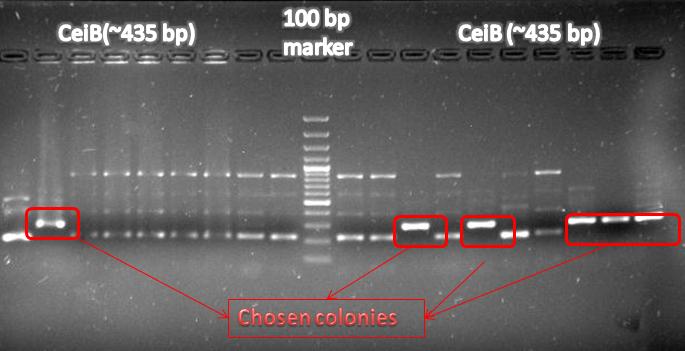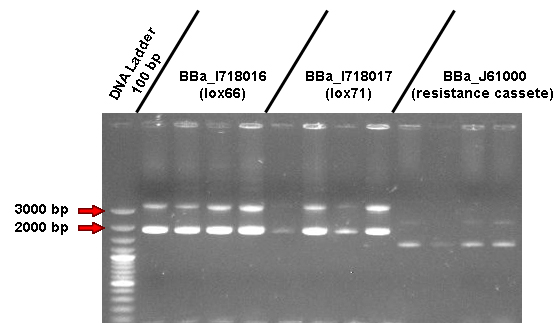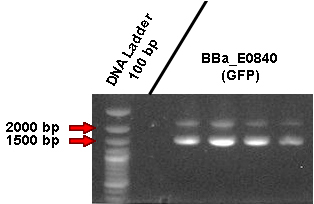Team:UNICAMP-Brazil/Notebooks/September 29
From 2009.igem.org
(→PY Promoter - Transformation) |
(→Customizing the PCR) |
||
| (5 intermediate revisions not shown) | |||
| Line 18: | Line 18: | ||
| - | |||
| - | |||
| - | |||
| - | |||
| + | ==''' ColiGuard '''== | ||
| - | + | ====Cre-Recombinase's and pSB1A3's purification==== | |
| - | '' | + | * Now that we obtained more Cre-Recombinase sample (see September 27th), we could proceed with Cre-Recombinase without ATG's biobrick construction. |
| + | * We ran an agarose gel with Cre-Recombinase's PCR product, as well as pSB1A3's miniprep sample. We then purified the target bands with Purelink's Quick Gel Extrection Kit, according to the manufacturer's protocol ([https://2009.igem.org/Team:UNICAMP-Brazil/Protocols/Purification_of_DNA_fragments_from_agarose_gels Protocol 7]). | ||
| - | + | ''Víctor'' | |
| + | |||
| + | ====CeiB: Colony PCR ==== | ||
| + | |||
| + | *<p style=”text-align:justify;”>Apparently, this time we got transformed cells. We performed colony PCR with VF and VR primers in order to comprove the transformation. The CeaB transformation was wrong, because it didn’t show the right size band. We tried one more time the transformation. Otherwise, the CeiB transformation showed a possibly correct band size (~400). To confirm it, tomorrow we are going to make miniprep and PCR again.</p> | ||
| + | |||
| + | [[image:29_set.jpg|center]] | ||
| + | |||
| + | ''Luige'' | ||
====Miniprep Results==== | ====Miniprep Results==== | ||
| - | *<p style=”text-align:justify;”>We ran an agarose gel with the minipreps samples ( | + | *<p style=”text-align:justify;”>We ran an agarose gel with the minipreps samples (procedure performed yesterday).</p> |
[[image:miniprep2809_17H_17J_24M.jpg]] | [[image:miniprep2809_17H_17J_24M.jpg]] | ||
| Line 44: | Line 50: | ||
''Marcelo'' | ''Marcelo'' | ||
| - | |||
| - | |||
| - | |||
| - | |||
| - | |||
| - | |||
| - | |||
| - | |||
{{:Team:UNICAMP-Brazil/inc_rodape}} | {{:Team:UNICAMP-Brazil/inc_rodape}} | ||
Latest revision as of 03:38, 22 October 2009
| ||||||||||||||||||||||||||||||||||
 "
"

















